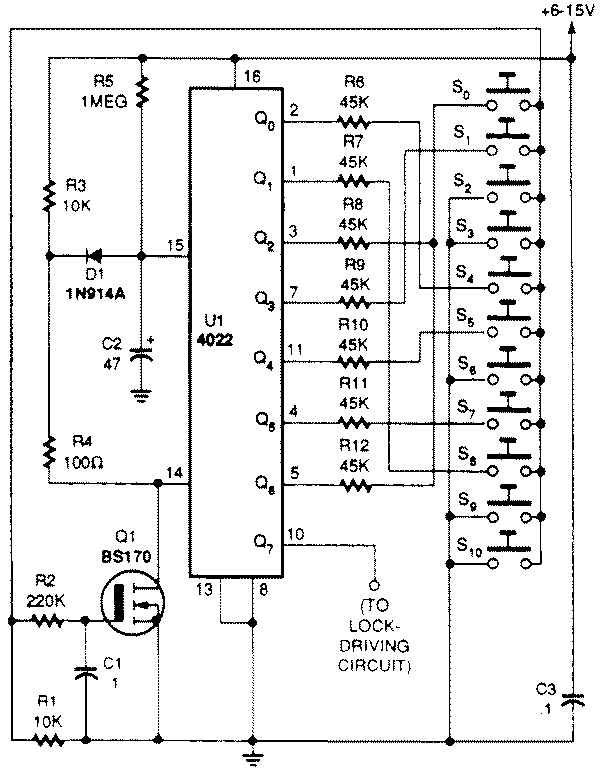Electronic Lock
The heart of the circuit is a 4022 octal counter. When first powered up, C2 is charged via R5, so the reset input of the counter is kept high. That causes output Q0 to go high while all other outputs are low. With the switches wired as shown, when S4 is pressed, the BS170 is switched on via debouncing network R2/C1, and U1 receives a clock pulse. Also, C2 is discharged via R4 and D1, removing the reset signal of the counter, allowing it to advance. The time required for C2 to charge via R5 (i.e., to reset the counter), is the maximum time that can lapse before the next key is pressed. The above cycle is therefore repeated only if S8 (connected to the Q1 output) is pressed in time. When all keys have been pressed in time and in the correct order, Q7 goes high for about four seconds to drive the "unlock" circuitry (e.g., a reay driver for an automatic door opener. A builder can change the code by reviewing the swithches. The code for the lock shown in the circuit diagram is 4-8-0-1-5-7-0. However, the 4022 octal counter can be replaced by a 4017 divide-by-10 counter. that will make it possible to add two more digits to the combination.
Title: Electronic Lock
electronic circuit
Source: http://circuitos.tripod.cl
Published on: 2005-07-23
Reads: 2253
Print version: ![]()
Other electronic circuits and schematics from Security and other sensors and detectors
-
Metal Detector
-
DayLight Alarm
-
Color Sensor
-
Touch Switch II
-
Car anti theft wireless alarm
-
Light Barrier Detector
-
Rain Alarm
-
Water Level Indicator with alarm
-
Combination Lock
-
Sound Operated Switch

